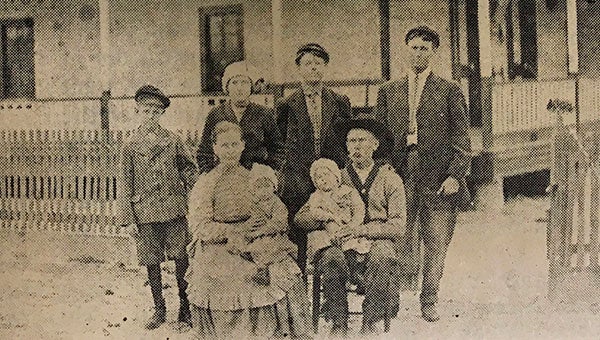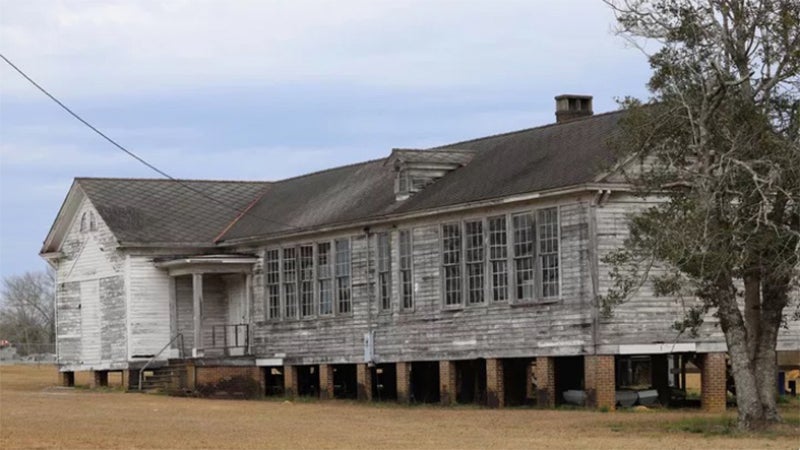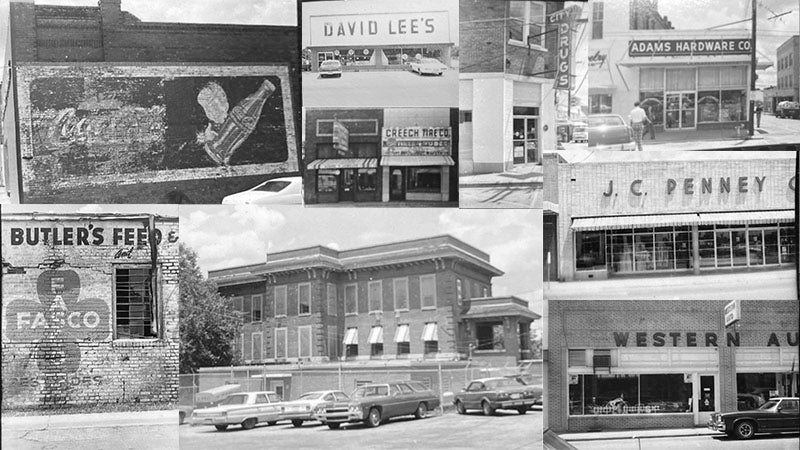Remember when: Looking back, looking forward
Published 1:48 am Saturday, June 8, 2019

- The Wiggins family of Babbie
Reminiscing about the 75th anniversary of the Normandy Invasion on D-Day this week, one of Sir Winston Churchill’s quotes comes to mind. “The farther backward you can look, the farther forward you are likely to see.” That is what the writer of this column attempts to do – remember the past, be encouraged by it, and look to the future!
Norma Williams of Gantt brought some old newspapers by my office, and I have been enjoying reading articles from The Opp News Old Home Folks Edition (1978).
I would like to spotlight three communities in Covington County sharing excerpts from this vintage edition. Many of the articles were written by citizens no longer living. Many of you readers have stories to write about – the schools you went to, the families and way of life you grew up in, the churches you attended, the businesses you established, and the events that occurred in your growing up days which made you into the person you are. If those memories are not written down, they are destined to be lost in time. So many people in their later years often say, “If I had only asked mom and dad this or that and written down what they said. Now it is too late!”
“RED LEVEL WAS BORN A RAILROAD TOWN – The town of Red Level was born in 1898 when the L & N Railroad began grading tracks for their trackage through that section. The first station agent was James Deens, and he built the first depot there. He was succeeded in 1902 by R. L. Purnell who served until he retired in 1948. The post office had been established as ‘Reed Level’ in June 1857. Alexander Atkinson was appointed the first postmaster. The first mayor of Red Level was J. J. Barrow. The town’s incorporation charter was approved by the Alabama Senate on March 4, 1901.”
“In 1821 Fairmont Baptist Church was organized in a wilderness setting. The first church building, a log structure, was used as a fortress against the Indians as well as a place of worship. The second building went up in 1867 during reconstruction days. The original cemetery land included 3 acres donated by Abraham Beesley and 3 acres donated by Joe Hardy.”
“For many years, an annual cemetery working was held before the summer revival in July or August. The event was surpassed in attendance only by the Covington County Singing Convention held every October. The working sometimes lasted 2 days. Dinner was served on the ground under a shady oak tree. People came from miles around to work and fellowship.”
“With each new building built through the years, lumber grown on the original 40 acres of land was used. Lots were eventually sold for homes in the adjoining Fairmont Subdivision.”
According to the late Probate Judge Leland Enzor, in 1890 Red Level’s population was 643 and Andalusia’s was 270.
“DARBY’S STORE IN GANTT – A landmark in the Gantt area in the 1970s was the Darby’s Store. What stands out the most was the Southern hospitality of the owners, Mr. and Mrs. C. M. Darby. The store was built after Highway 29 North was opened for traffic from Brantley to Andalusia. Mrs. Darby worked with her husband. They were both known for their generosity. During the Depression when the Bank of Gantt failed, C. M. helped many families have food regardless of whether or not they could pay. He raised crops on farm land in the Boston Community that he had purchased from his father-in-law. His tenant farmers maintained the land for more than 30 years growing peanuts, cotton, corn, and raising cattle.”
“The Darbys were supportive of the little Methodist Church in downtown Gantt that had been built by Mrs. Darby’s father, W B. Harley, Lake Gantt, Sr., and Mr. Ingram.”
“Mrs. Darby loved her flower and vegetable garden and always had a prize-winning strawberry patch. Mr. C. M. was known for his dry wit. One of his sayings was ‘Every barrel should sit on its bottom!’”
“The couple had 5 children – Mrs. Charles Gantt, Mrs. Burch Flournoy, Mrs. Dave Philips, Charles Darby, and Buster Darby. The store was later converted to completely residential when daughter Helen Philips and her husband Dave retired and moved back home to Gantt.”
“TWO PASSENGER TRAINS STOPPED DAILY IN BABBIE – Babbie Community was a thriving and prosperous community dating back into the 1800s. There was a depot were 2 passenger trains passed daily; a general store where everything from material to hoop cheese and crackers were sold; 2 schools, Babbie and Robbins School; and the Bethel Church where everybody was kinfolk.”
“There were log rollings and hog killings. The men turned out to work and the women made apple tarts, collard greens, black-eyed peas, baked ham – you name it, they had it, and plenty of it, too! The children played outside (no tv).”
“Each family in the vicinity had a dinner bell and if it tolled at an unusual hour, that meant trouble and all the neighbors came running. At night everyone used to sit around the fireplace and shell peanuts during the season. When the neighbors were invited in, it turned into a party. When mother would disappear, that meant soon we would have some taffy candy made with sugar cane syrup. When daddy got up and began to wind the clock, that meant bedtime and no questions asked!”
“Now, of course, the old mud road is paved and everyone has electricity. Time marches on, but memories never fade!”
Yes, history is fascinating especially the history of Covington County and the unique communities that progressed around the county. The old timers had a way with words in describing the way of life back then as we Remember When.
Sue Bass Wilson, AHS Class of 1965, is a local real estate broker and long-time member of the Covington Historical Society. She can be reached at suebwilson47@gmail.com





